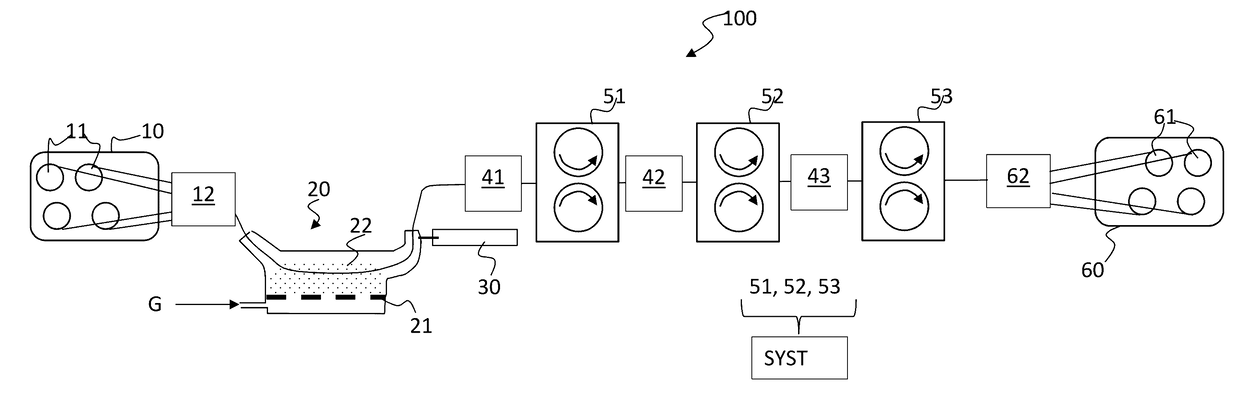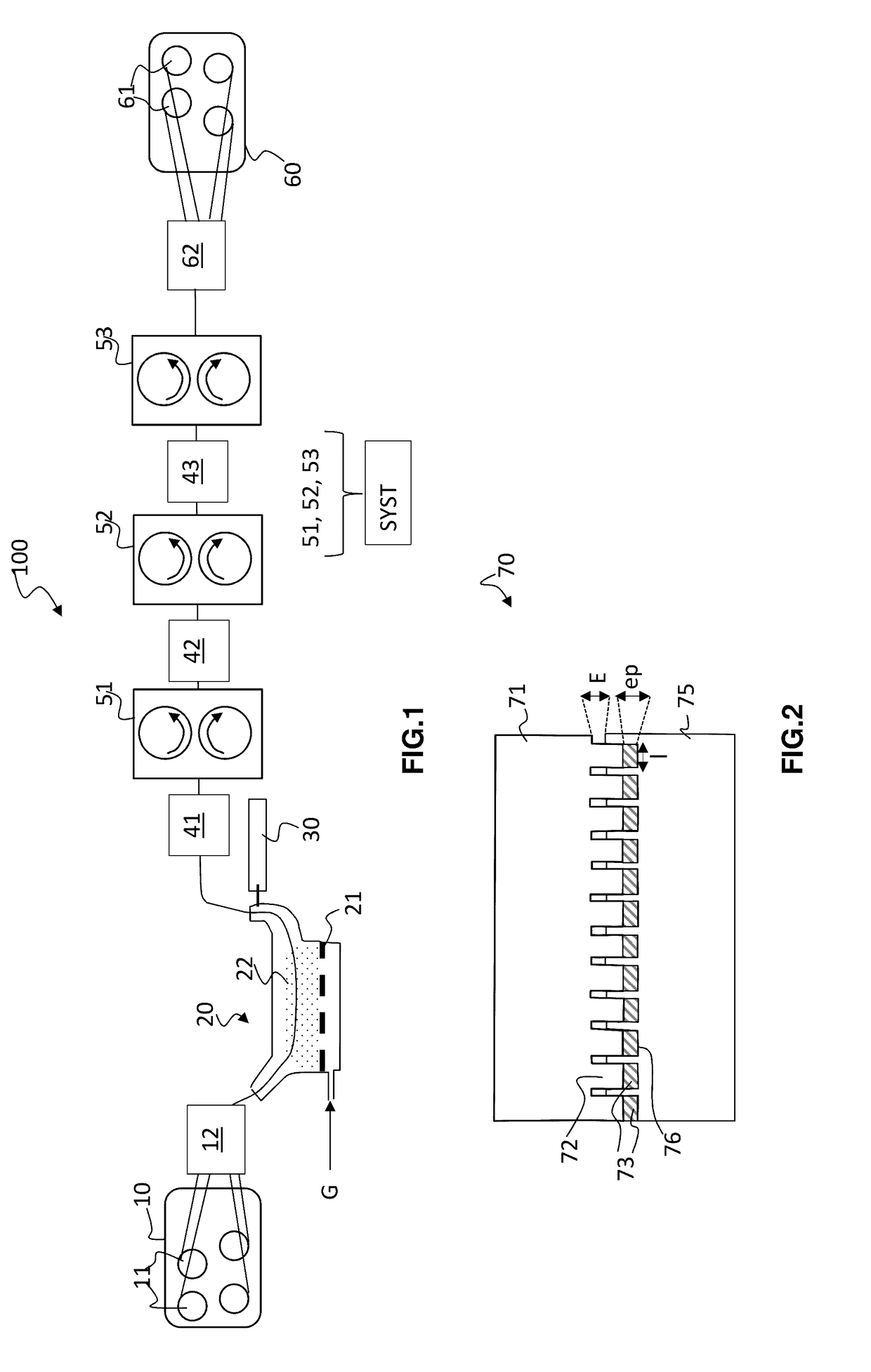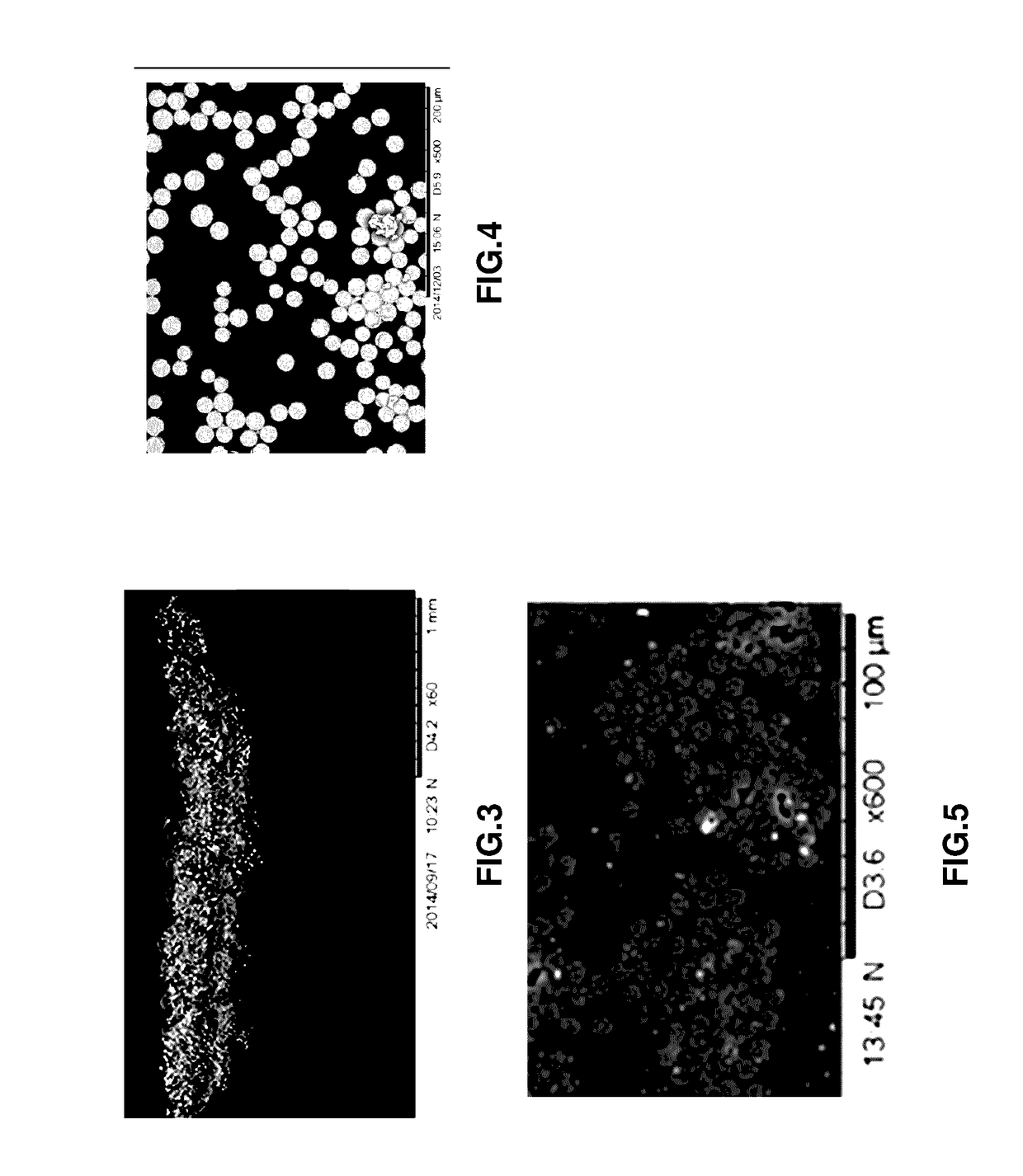Method of producing a fibrous material pre-impregnated with thermoplastic polymer in a fluid bed
a technology of thermoplastic polymer and fibrous material, which is applied in the direction of liquid surface applicators, coatings, etc., can solve the problems of inability to apply directly to the impregnation of thermoplastic polymers, onset of a large number of defects in the pre-impregnation fibrous material, and inability to achieve homogeneity of deposit which is often imperfect, etc., to achieve the effect of reducing porosity, wide width and high viscosity ratio
- Summary
- Abstract
- Description
- Claims
- Application Information
AI Technical Summary
Benefits of technology
Problems solved by technology
Method used
Image
Examples
example 1
[0120]A glass fibre roving of 1200 Tex was immersed in a fluidised powder bed composed of PA11 polyamide powder having a mean particle size of 100 μm. The PA11 powder was previously dry mixed with 0.2% (by weight) of carbon black powder of 50 μm particle size.
[0121]On leaving the fluidised bed the glass fibre roving was heated up to the softening temperature of the polymer (150° C.) to fix the powder on the glass fibres. The impregnation method allowed impregnation to the core of the fibre rovings. The force applied to the roving was low and just sufficient to tension the fibre roving.
[0122]Before being placed in the calender, the powder pre-impregnated roving was heated by means of an infrared (IR) oven until melting of the polymer and then placed in the heating calender having a wall temperature (i.e. the temperature of the surface of the castellated portion and grooved portion) brought to 110° C. The fluidised bed through-rate and calender through-rate were the same since the rov...
example 2
[0128]The operating conditions were identical to Example 1. The particle size of the PA11 powder differed (30 pm on average compared with 100 μm in Example 1). In this example carbon fibres were used forming a 12K roving. FIG. 5 gives a cross-sectional view of the composite ribbon obtained, after calendering, observed under scanning electron microscope (SEM). As in Example 1 the powder particles melted to give way to a polymer matrix of composite ribbon that is homogeneous and scarcely porous.
[0129]Width measurements of the calendered composite ribbon are given in Table 3, following the same measuring protocol as in Example 1.
TABLE 3Width measurements of samples representing a ribbon calendered fromthe 12K carbon fibre roving pre-impregnated with PA11 powder.Width (mm)Mini6.00Maxi6.75Mean6.36Std. deviation0.13
[0130]This demonstrates the efficacy of the impregnation method using a dry powder in a fluidised bed in association with calendering, to obtain a composite, unidirectional (UD...
PUM
| Property | Measurement | Unit |
|---|---|---|
| width | aaaaa | aaaaa |
| micrometric size | aaaaa | aaaaa |
| flash point | aaaaa | aaaaa |
Abstract
Description
Claims
Application Information
 Login to View More
Login to View More - R&D Engineer
- R&D Manager
- IP Professional
- Industry Leading Data Capabilities
- Powerful AI technology
- Patent DNA Extraction
Browse by: Latest US Patents, China's latest patents, Technical Efficacy Thesaurus, Application Domain, Technology Topic, Popular Technical Reports.
© 2024 PatSnap. All rights reserved.Legal|Privacy policy|Modern Slavery Act Transparency Statement|Sitemap|About US| Contact US: help@patsnap.com










